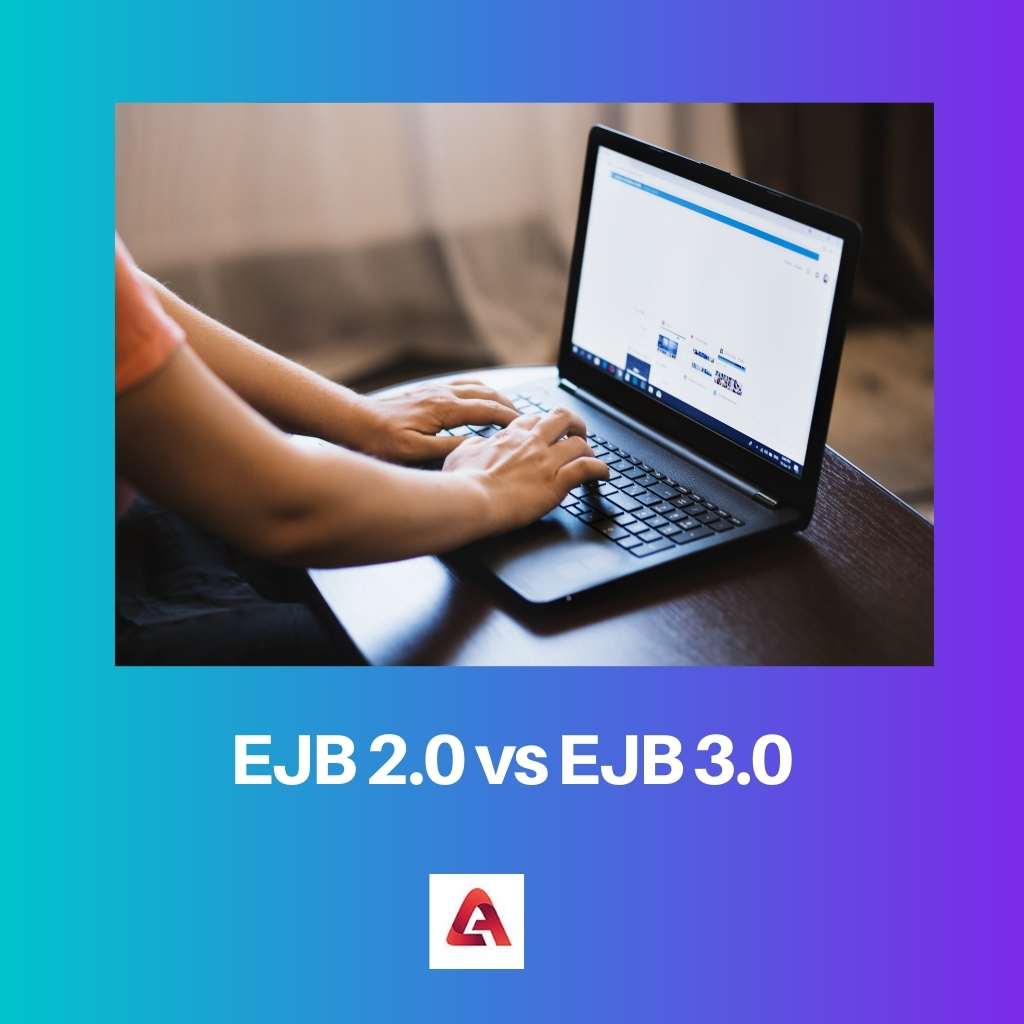Software comprises several lines of code written in a particular programming language or a mix of one or more programming languages.
After the making of the software, the software is tested and then it is launched; sometimes, it is available for free, but mostly it comes with a subscription package.
EJB (enterprise java bean) is developed by Sun Microsystems.
It is a server-side component that manages the application’s security and provides a better environment for developing business-related applications and software.
Message-driven, entity bean, and session bean are its categorizations.
Key Takeaways
- EJB 2.0 relies on XML deployment descriptors and complex programming models.
- EJB 3.0 simplifies development with annotations, dependency injection, and POJO-based programming.
- EJB 3.0 improves developer productivity and reduces boilerplate code compared to EJB 2.0.
EJB 2.0 vs EJB 3.0
EJB 2.0 was released in 2001. It introduced several new features, including support for message-driven beans, container-managed relationships, and declarative transaction management. EJB 3.0 was released in 2006. It aimed to simplify the development of EJB components and make them more accessible to a broader audience of developers.

EJB 2.0 was released in 2001 and designed by the Java community process. This enterprise Java bean was mainly created to generate applications related to business organizations.
And this became the standard platform for developing distributed object-oriented applications written in Java language associated with the business.
EJB 3.0 was released in 2006 and was a modified version of previous versions.
This version introduced annotations, meaning that some short data or text can be added to the main code written in Java. Previously deployment descriptors were used instead of annotations.
Comparison Table
| Parameters of Comparison | EJB 2.0 | EJB 3.0 |
|---|---|---|
| Interfaces | EJB 2.0 includes interfaces related to home and remote, and for that, there are separate deploy descriptors. | It does not include interfaces related to home and remote, and it uses annotations instead of deploy descriptors. |
| Database access | It has its application programming interface named Java persistence for accessing the database. | EJB 3.0 can be attached to any third-party plugin, and, it offers flexibility. |
| Third-party plugins | EJB 2.0 does not offer many third-party plugins and is not very portable or flexible. | Deploy descriptors handle issues related to security or hacking. |
| Security issues | It supports enterprise Java bean query language and is very flexible while using this language for writing database queries. | Issues related to security or reliability depend on annotations. |
| Query | It does not support the EJB query language for writing queries for databases. | It supports enterprise java bean query language and is very flexible while using this language for writing database queries. |
What is EJB 2.0?
EJB 2.0 was the first application that used enterprise Java bean structure to execute applications and web services or websites that uses the latest Java language as its source code.
This version uses large codes to write its home and remote interfaces, which were necessary to implement before any software execution.
EJB 2.0 combines tools from different suppliers to make distributed applications, making this version flexible and user-friendly.
Earlier versions of EJBs were not compatible with the existing system interface, but this version introduces compatibility with any system that can be extended according to users’ needs.
EJB 2.0 also introduced CMR concepts to its applications, which means it can also be used to maintain container-managed relationships that help to collect entity beans from the actual database.
What is EJB 3.0?
EJB 3.0 made everything easy by eliminating the EJB-jar.xml files and introducing the business interface and the entity bean class for easy access to the database.
In this version of enterprise java bean, people can use POJOs that are plain old Java object and does not require any defined classpath for the reusability of the program.
EJB 3.0 manages its database using Java persistence application programming interface,; therefore, suppliers’ or do not usevendors’ database mapping applications.
Its container only contains a client, a business interface, and an enterprise bean class which makes it simpler than EJB 2.0.
The interceptor methods can be executed more than once in this version of EJB,. The existing interceptor methods can be configured easily for all enterprise Java beans inside the java-archive file.
Main Differences Between EJB 2.0 and EJB 3.0
- EJB 2.0 contains communication interfaces related to home and remote, and for that, there are separate deploy descriptors. Whereas EJB 3.0 does not include home and remote interfaces, it uses annotations instead of deploy descriptors.
- EJB 3.0 has a Java persistence application interface for accessing the database. While EJB 2.0 uses a java EE component related to the server side for acquiring user databases or information.
- EJB 3.0 can be attached to any third-party plugin, and it offers flexibility. EJB 2.0 does not offer many third-party plugins and is neither very portable nor flexible.
- EJB 3.0 supports enterprise Java bean query language and is very smooth while using this language for writing database queries. While EJB 2.0 is not smooth with EJB query language for writing database queries.
- In EJB 2.0, Issues related to security or hacking are handled by deploy descriptors. Whereas in EJB 3.0, issues related to unauthenticated access or security are handled by annotations.
- http://www.inferdata.com/resources/whitepapers/ejb20whitepaper.pdf
- https://www.koreascience.or.kr/article/JAKO201219565295905.page